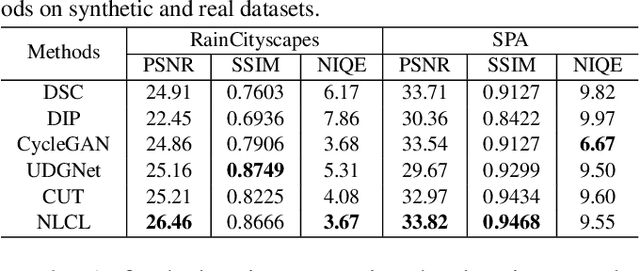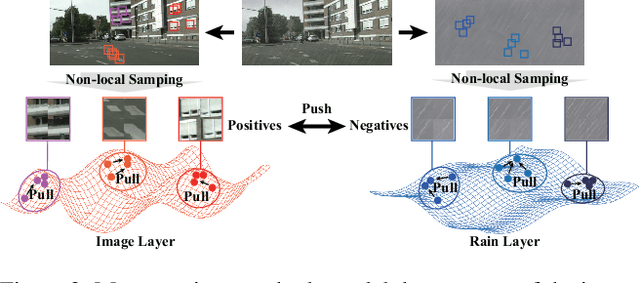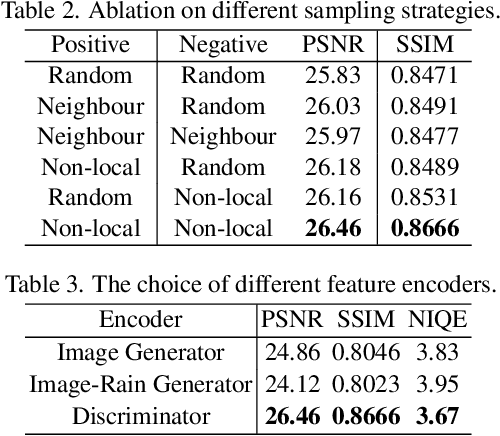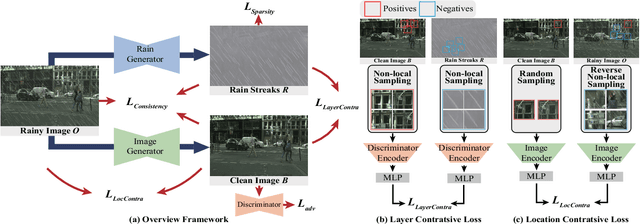Zhao Xile
Unsupervised Deraining: Where Contrastive Learning Meets Self-similarity
Mar 22, 2022



Abstract:Image deraining is a typical low-level image restoration task, which aims at decomposing the rainy image into two distinguishable layers: the clean image layer and the rain layer. Most of the existing learning-based deraining methods are supervisedly trained on synthetic rainy-clean pairs. The domain gap between the synthetic and real rains makes them less generalized to different real rainy scenes. Moreover, the existing methods mainly utilize the property of the two layers independently, while few of them have considered the mutually exclusive relationship between the two layers. In this work, we propose a novel non-local contrastive learning (NLCL) method for unsupervised image deraining. Consequently, we not only utilize the intrinsic self-similarity property within samples but also the mutually exclusive property between the two layers, so as to better differ the rain layer from the clean image. Specifically, the non-local self-similarity image layer patches as the positives are pulled together and similar rain layer patches as the negatives are pushed away. Thus the similar positive/negative samples that are close in the original space benefit us to enrich more discriminative representation. Apart from the self-similarity sampling strategy, we analyze how to choose an appropriate feature encoder in NLCL. Extensive experiments on different real rainy datasets demonstrate that the proposed method obtains state-of-the-art performance in real deraining.
 Add to Chrome
Add to Chrome Add to Firefox
Add to Firefox Add to Edge
Add to Edge